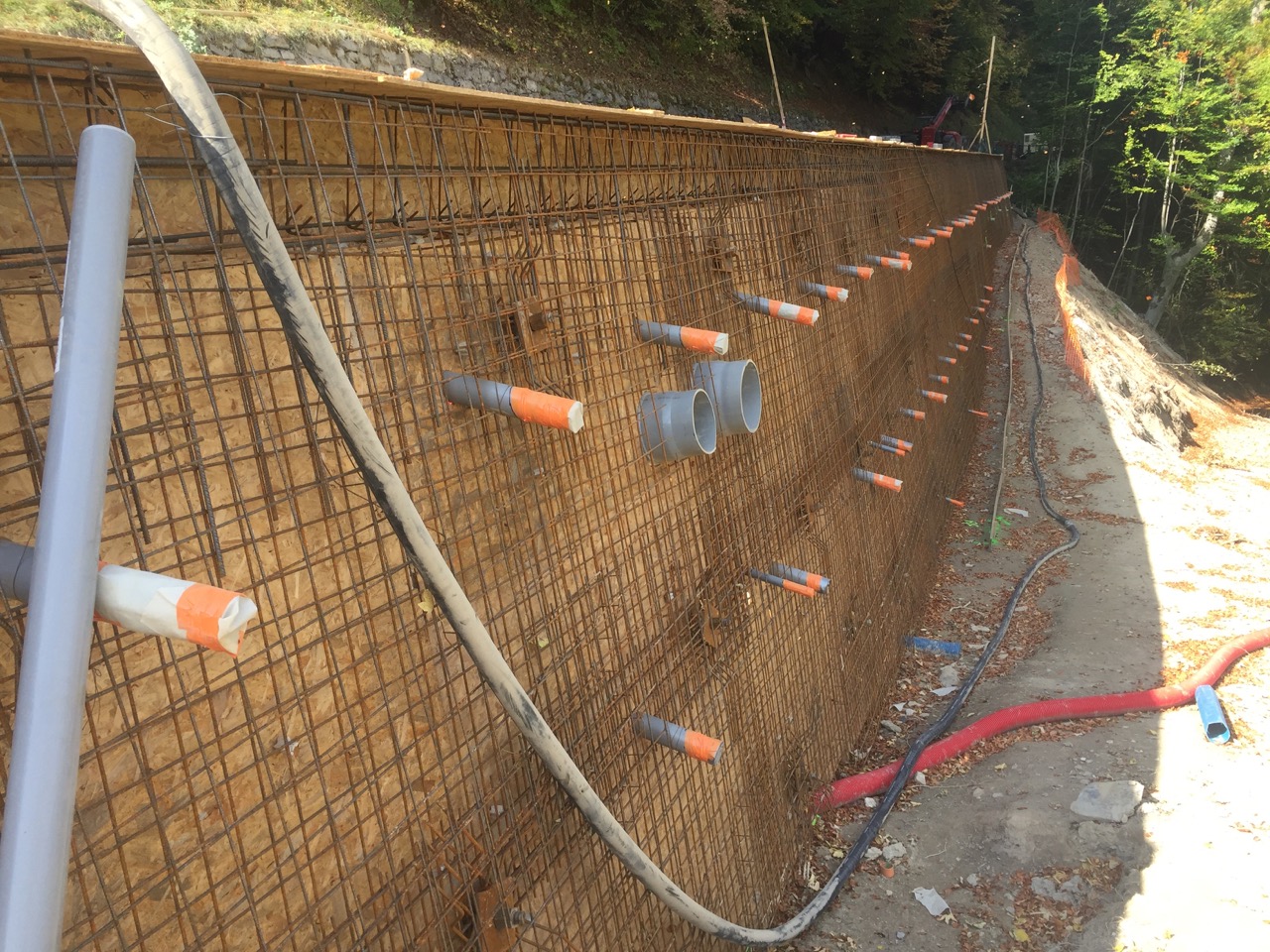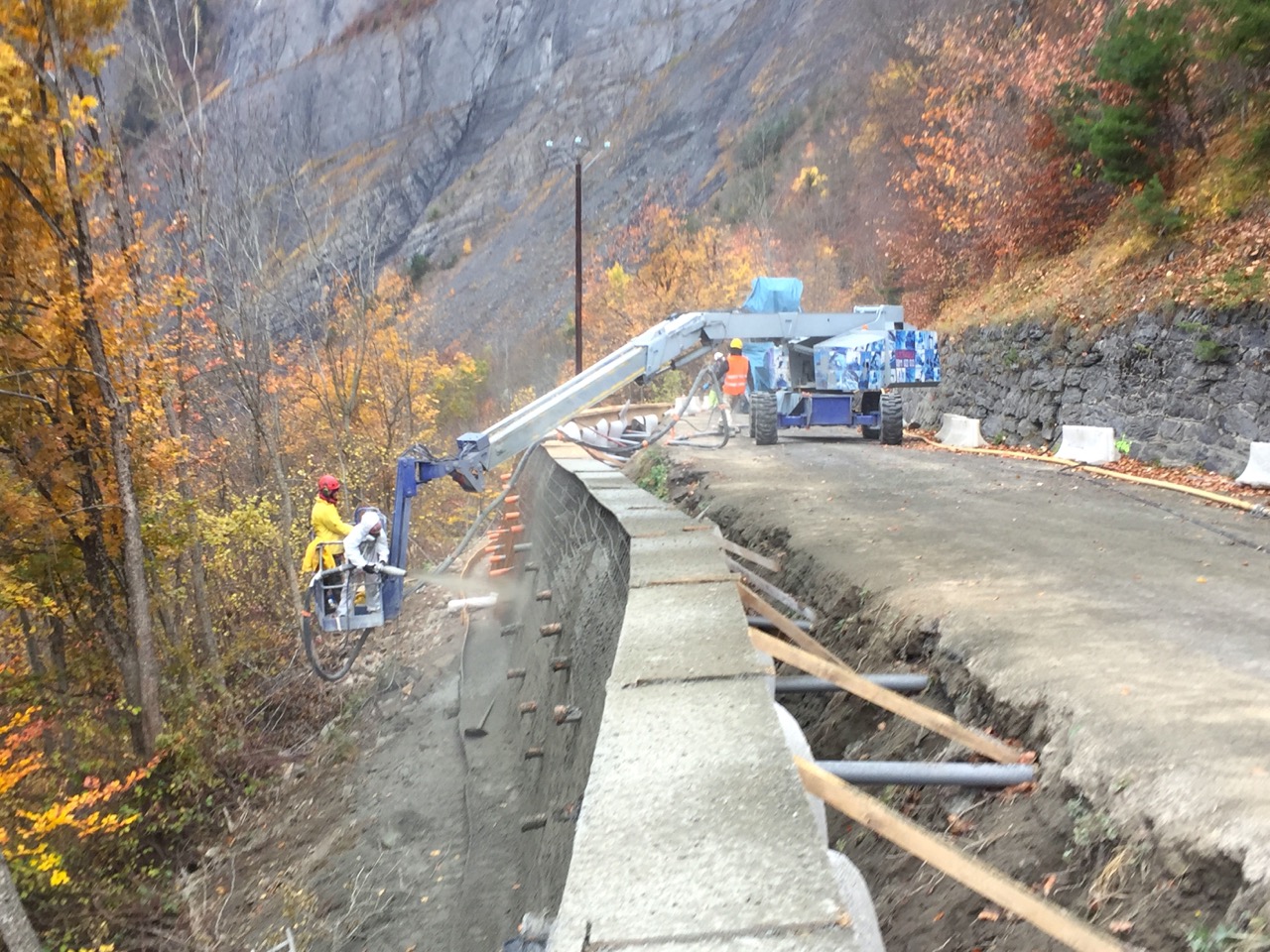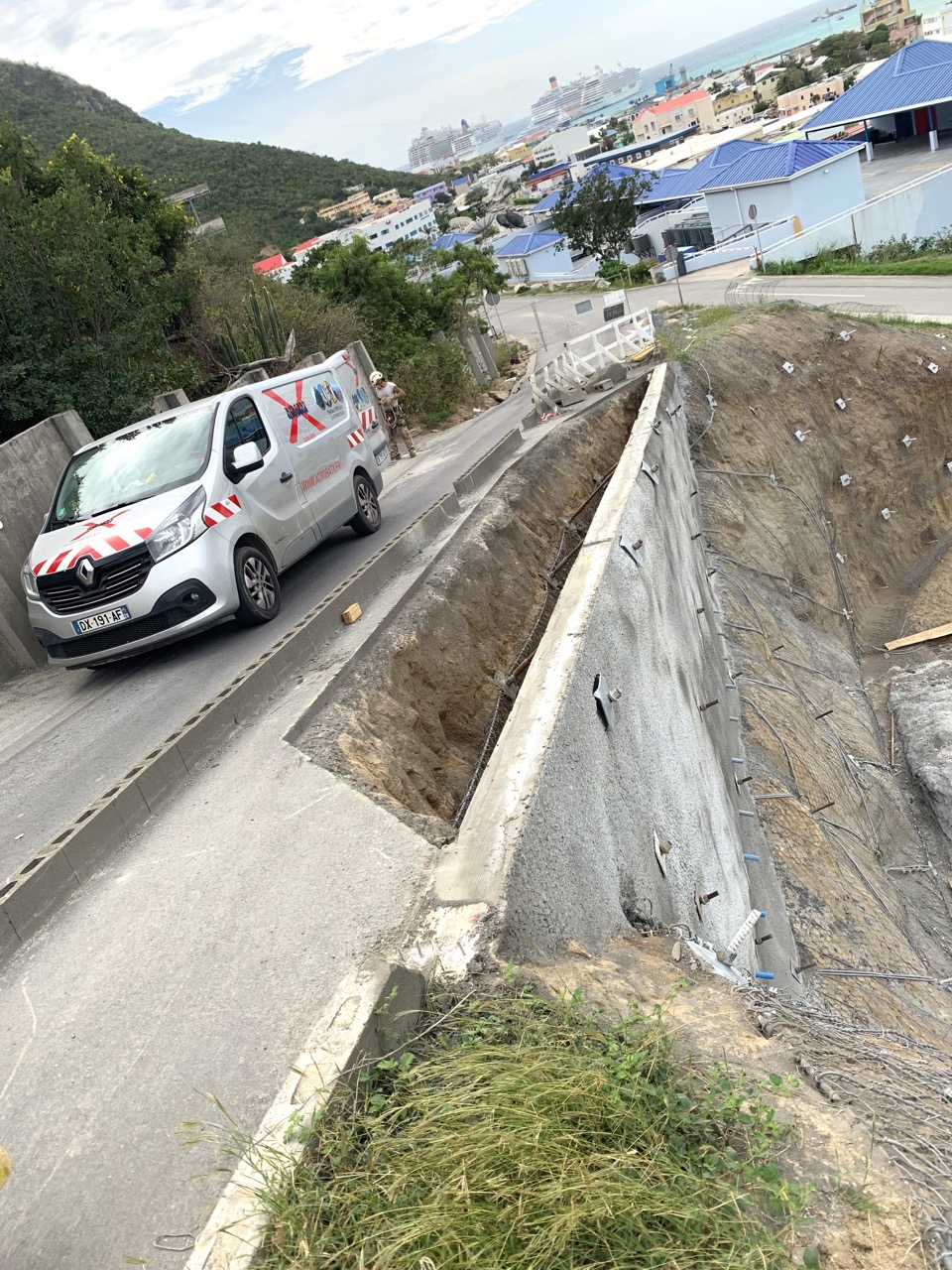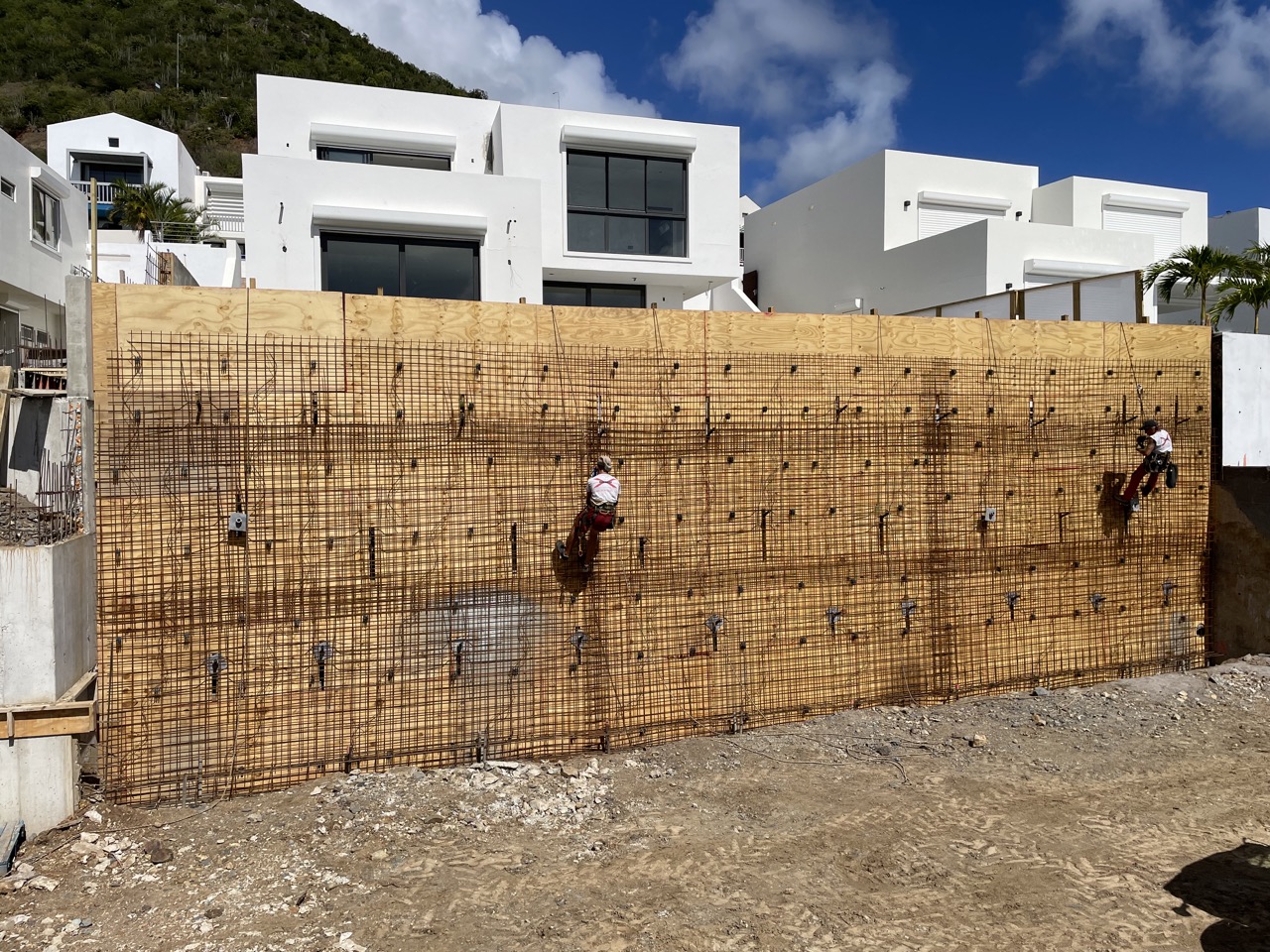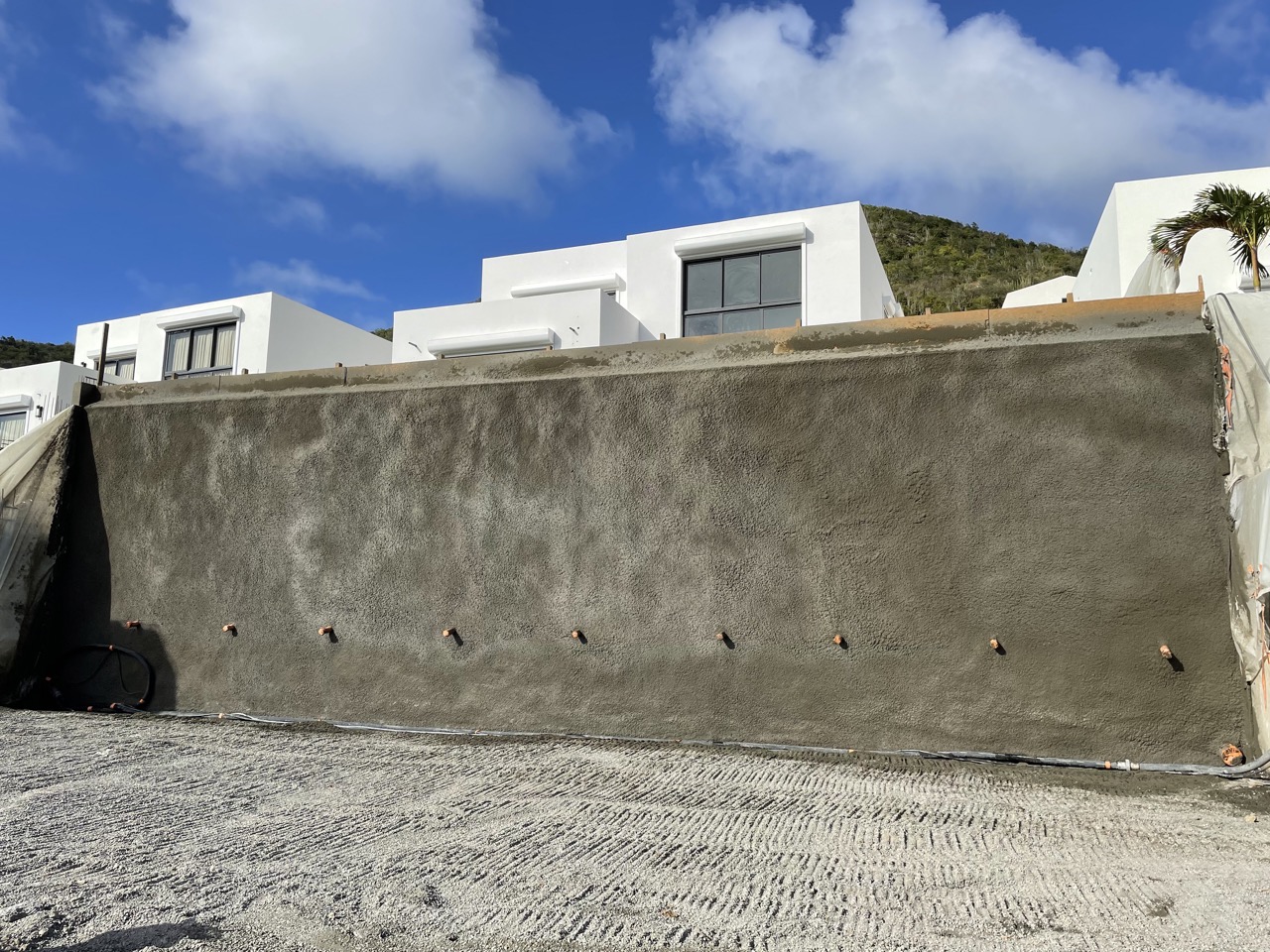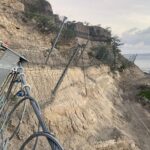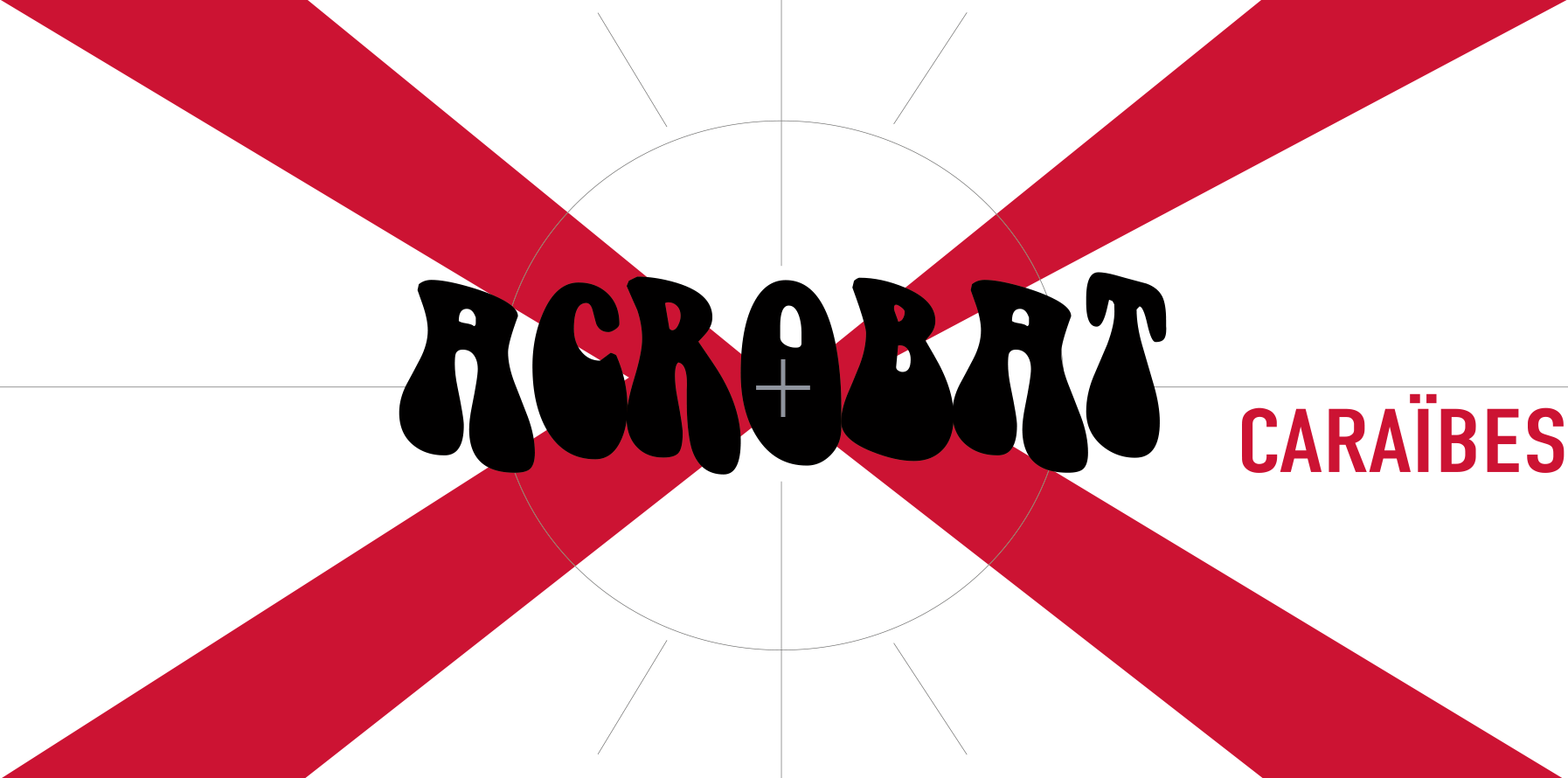
Soil-Nailed Walls with Dry-Spray Reinforced Concrete
A Versatile Solution for Retaining Structures
Soil-nailed walls are a highly adaptable technical solution for retaining structures in various contexts, such as existing retaining walls or excavations in real estate projects. While this method is considered heavier and more expensive, it guarantees exceptional durability, with a lifespan of up to 100 years when properly designed.
This technique can often replace alternatives like micro-Berlin walls and, in specific geological contexts, can even be substituted with methods like HLE nets or HR grids for optimal results.
How Soil-Nailed Walls Are Built
The construction of a soil-nailed wall involves several methodical steps:
- Clearing the Site:
- Removing vegetation from the intervention area.
- Excavation:
- Carried out in one go or in successive passes, depending on project requirements.
- Drilling for Nails:
- Insertion of sealed metal reinforcements (GEWI type) or use of self-drilling techniques.
- Reinforcement Installation:
- Placement of single or double welded mesh layers to provide structural strength.
- Foundation Work:
- Construction of the wall’s base using a reinforced concrete footing or a BA sill on micropiles.
- Dry-Spray Concrete Application:
- Applying dry-spray concrete in multiple passes to achieve the required final thickness.
Specific Applications of Soil-Nailed Walls
1. Creating Terraces on Steep Slopes
This technique stabilizes challenging terrains, enabling the creation of new platforms for development or other uses.
2. Reclaiming Lost Land
In cases of landslides, soil-nailed walls can be constructed on temporary formwork (wood or aluminum) positioned to align the retaining wall at the desired location. The area is then backfilled progressively, restoring a safe and stable surface.
These specialized applications require a high level of expertise and technical skill to ensure both functional and aesthetic results.
Variation: Suspended Anchored Veil
A variation of the soil-nailed wall, the suspended anchored veil, eliminates the need for a traditional foundation. Instead, it acts as a self-supported patch, held in place entirely by its anchors.
Common Uses:
- Addressing localized erosion zones.
- Counteracting thrust forces that compromise existing grid systems.
This targeted, cost-effective intervention consolidates and reinforces structures, making it an ideal choice for specific applications.
Why Choose Acrobat X for Soil-Nailed Walls?
With proven expertise in retaining structures and rope access work, Acrobat X delivers tailored solutions designed to meet geological and structural challenges. Whether for standard projects or specialized applications like suspended anchored veils, we guarantee:
- Comprehensive technical expertise.
- Long-lasting durability.
- Customized solutions to ensure functional and aesthetic results.
Contact Us
Trust Acrobat X for the safe and effective construction of your retaining structures. Contact us today for a detailed assessment and expert execution of your project.

